1. Early life and background
Thomas H. Ince's early life was deeply rooted in the theater, a path that laid the groundwork for his eventual transition into the burgeoning film industry.
1.1. Birth and family
Thomas Harper Ince was born on November 16, 1880, in Newport, Rhode Island. He was the middle child among three sons and a daughter raised by English immigrants, John E. and Emma Ince. His father, John E. Ince, was born in Wigan, Lancashire, in 1841. He was the youngest of nine boys and began his career in the British Navy as a "powder monkey". After disembarking in San Francisco, he found work as a reporter and a coal miner. Around 1887, when Thomas was approximately seven years old, the family relocated to Manhattan to pursue opportunities in the theater. Both his father and mother, Emma Ince, worked as actors, with his father also serving as a musical agent. Thomas himself, along with his sister Bertha and brothers John and Ralph, all became actors.
1.2. Theater career
Ince made his Broadway debut at the age of 15, appearing in a small role in an 1893 revival of the play Shore Acres by James A. Herne. As a child, he performed with several stock companies before becoming an office boy for the theatrical manager Daniel Frohman. Ince later attempted to establish his own vaudeville company, "Thomas H. Ince and His Comedians," in Atlantic Highlands, New Jersey, though this venture proved unsuccessful. In 1907, he met actress Elinor Kershaw, known as "Nell," and they were married on October 19 of that year. The couple went on to have three children.
2. Entry into filmmaking
Ince's shift from the stage to the screen marked a pivotal moment in his career, leading him to California where he would begin to reshape the landscape of film production.
2.1. Early film activities
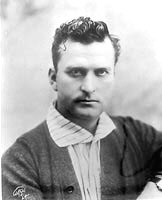
Ince's directing career commenced in 1910, following a chance encounter in New York City with William S. Hart, an employee from his former acting troupe. Ince initially found work in film as an actor for the Biograph Company, where he was directed by D.W. Griffith, who would later become his partner. Griffith was sufficiently impressed with Ince's capabilities to hire him as a production coordinator at Biograph. This role led to further opportunities coordinating productions at Carl Laemmle's Independent Motion Pictures Co. (IMP).
In the same year, when a director at IMP was unable to complete a small feature film, Ince boldly suggested that Laemmle hire him as a full-time director to finish the project. Impressed by the young man's confidence, Laemmle dispatched Ince to Cuba to produce one-reel shorts with new stars Mary Pickford and Owen Moore. This move was strategic, designed to operate beyond the reach of Thomas Edison's Motion Picture Patents Company, a trust that sought to monopolize film production and suppress independent companies. While Ince's early output was modest, he explored various subjects, though he was particularly drawn to westerns and American Civil War dramas.
As conflicts between the trust and independent filmmakers intensified, Ince relocated to California, seeking to escape these pressures and achieve the cinematic effects he admired in Griffith's work, which he believed were best realized in Hollywood. After only a year with IMP, Ince resigned. In September 1911, he approached the offices of actor-financier Charles O. Baumann and actor-writer Adam Kessel, Jr., co-owners of the New York Motion Picture Company (NYMP). Ince learned that NYMPC had recently established a West Coast studio, Bison Studios, at 1719 Alessandro (now Glendale Blvd.) in Edendale, Los Angeles (present-day Echo Park, Los Angeles), specifically for making westerns, and he expressed his desire to direct these pictures. He later recounted his initial reaction: "The offer came as a distinct shock, but I kept cool and concealed my excitement. I tried to convey the impression that he would have to raise the ante a trifle if he wanted me. That also worked, and I signed a contract for three months at 150 USD a week. Very soon after that, with Mrs. Ince, my cameraman, property man and Ethel Grandin, my leading woman, I turned my face westward."
Upon arriving at Bison Studios with his wife and a small entourage, Ince was surprised to find that the studio was little more than a "tract of land graced only by a four-room bungalow and a barn."
3. Filmmaking innovations
Thomas H. Ince's vision and organizational prowess led to groundbreaking innovations that fundamentally reshaped the film industry, transforming it from an artisanal craft into a structured, industrialized system.
3.1. Founding and operation of Inceville
Ince's ambitious aspirations soon prompted him to seek a location beyond the confined spaces of Edendale, one that would offer greater scope and variety for his productions. He ultimately chose a 460 acre (460 acre) tract of land known as Bison Ranch, situated at the intersection of Sunset Boulevard and Pacific Coast Highway in the Santa Monica Mountains. This site, which is now the location of the Self-Realization Fellowship Lake Shrine, was initially rented by the day. By 1912, Ince had accumulated sufficient funds to purchase the ranch. Additionally, he secured permission from NYMP to lease an expansive 18 K acre (18.00 K acre) area in the Palisades Highlands, extending 7.5 mile up Santa Ynez Canyon, between Santa Monica and Malibu. This vast property, which would eventually become the site of Universal Studios, was owned by The Miller Bros from Ponca City, Oklahoma. It was here that Ince began constructing his pioneering movie studio.
The "Miller 101 Bison Ranch Studio," which the Millers affectionately named "Inceville" (and was later rebranded as "Triangle Ranch"), was revolutionary for its time. It was the first facility of its kind to integrate all necessary production elements into a single location, featuring silent stages, production offices, printing labs, a commissary large enough to serve hundreds of workers, dressing rooms, props houses, and elaborate sets. While the studio was under construction, Ince also leased the Miller Brothers 101 Ranch and Wild West Show from the Miller Bros., relocating the entire troupe from Oklahoma to California by train. This impressive show included 300 cowboys and cowgirls, 600 horses, cattle, and other livestock (such as steers and bison), along with a complete Sioux tribe of 200 members who established their teepees on the property. The collective was subsequently renamed "The Bison-101 Ranch Co." and specialized in producing westerns released under the banner of World Famous Features.
Upon completion of construction, the studio's streets were adorned with a diverse array of structures, ranging from modest cottages to grand mansions, designed to mimic the architectural styles of various countries. Extensive outdoor western sets were also built and utilized on the site for several years. According to Katherine La Hue's book, Pacific Palisades: Where the Mountains Meet the Sea, Ince invested 35.00 K USD in buildings, stages, and sets, creating miniature versions of Switzerland, a Puritan settlement, and a Japanese village. Beyond the breakers, an ancient brigantine was anchored, with cutlassed men swarming its sides, while on the shore, performing cowboys galloped about, twirling their lassos in pursuit of errant cattle. The main herds were maintained in the hills, where Ince also cultivated feed and garden produce. A constant supply of provisions was required to house and feed the large number of actors, directors, and support staff.
While the cowboys, Native Americans, and various workmen resided at "Inceville," the principal actors commuted from Los Angeles and other communities as needed. They would travel by red trolley cars to the Long Wharf at Temescal Canyon, where buckboards would then transport them to the set. Ince himself lived in a house overlooking the sprawling studio, a location that later became part of Marquez Knolls. From this vantage point, he served as the central authority over multiple production units, fundamentally altering the filmmaking process by organizing production methods into a highly disciplined system. Indeed, "Inceville" became the prototype for future Hollywood film studios, featuring a clear hierarchy with a studio head (Ince), producers, directors, production managers, production staff, and writers, all collaborating within a single organization under the "unit system," and overseen by a General Manager, Fred J. Balshofer.
Inceville experienced several fires during its operation. On January 16, 1916, a significant fire erupted at the studio, just days after the opening of Ince's first Culver City studio. Eight people, including Ince himself, sustained injuries, and the damage was estimated at 250.00 K USD. The blaze was possibly caused by a spark igniting a pile of highly flammable nitrate film stock discarded during the film editing process. An earlier fire in 1915 had also destroyed a number of sets. Ince eventually abandoned the studio and sold it to William S. Hart, who renamed it "Hartville." Three years later, Hart sold the property to Robertson-Cole Pictures Corporation, which continued filming there until 1922. Katherine La Hue noted that the site became "virtually a ghost town" when the last remnants of "Inceville" were deliberately burned on July 4, 1922, leaving only a "weatherworn old church, which stood sentinel over the charred ruins."
3.2. Introduction of film production systems
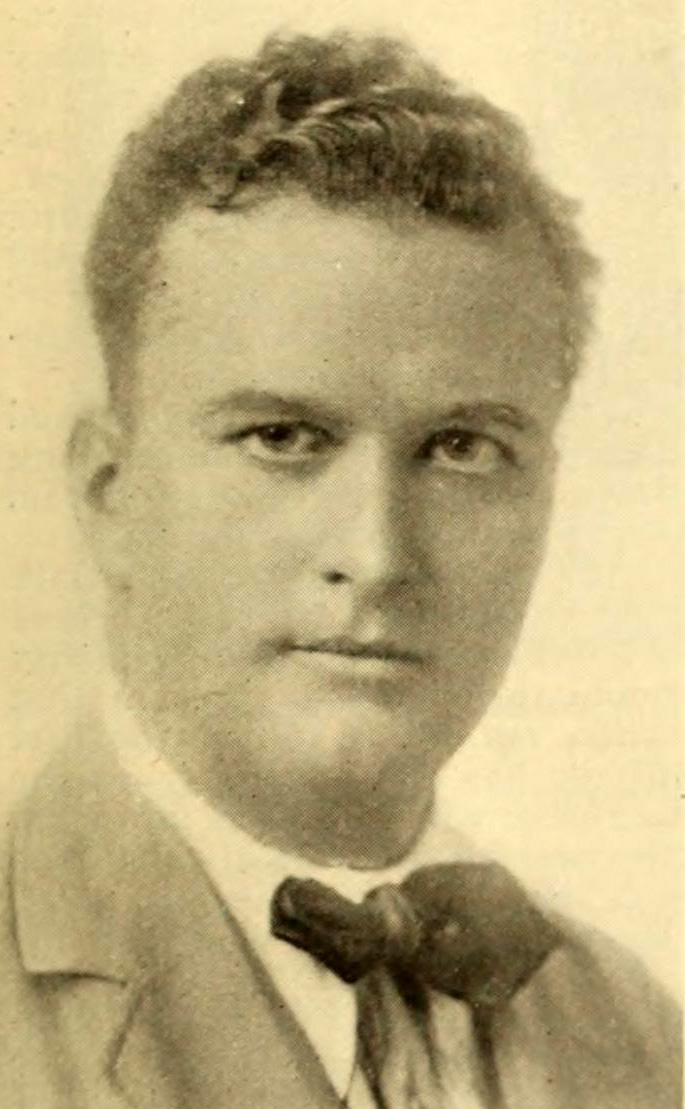
Before Ince's innovations, the director and cameraman typically controlled the entire production of a picture. Ince, however, revolutionized this by placing the producer in charge of the film from its initial concept to its final product, thereby defining the producer's role in both a creative and an industrial sense. He was also among the first to hire separate professionals for screenwriting, directing, and editing, a departure from the previous practice where the director often handled all these tasks independently. By 1913, the concept of the production manager had been established within his system.
With the assistance of George Stout, an accountant for NYMP, Ince restructured the film output process to instill greater discipline. Following these adjustments, the studio's weekly production significantly increased from one to two, and subsequently to three two-reel pictures per week. These films were released under various labels, such as "Kay-Bee" (named after Kessel-Baumann), "Domino" (for comedies), and "Broncho" (for westerns). The entire process-writing, producing, cutting, and assembling-was streamlined, with the finished product delivered within a week. By enabling the simultaneous production of multiple films, Ince decentralized the movie production process to meet the growing demand from theaters. This marked the dawn of the "assembly-line system" that would eventually be adopted by virtually all major studios.
This production model, developed between 1913 and 1918, allowed Ince to exert even greater control over the filmmaking process as a director-general. In 1913 alone, he produced over 150 two-reeler movies, predominantly Westerns, thereby cementing the genre's popularity for decades to come. While many of Ince's films garnered praise in Europe, some American critics did not share the same high opinion. One such significant early picture was The Battle of Gettysburg (1913), a five-reel film that played a crucial role in popularizing the concept of the feature-length film. Another important early work for Ince was The Italian (1915), which sensitively depicted immigrant life in Manhattan. Among his most successful early films were War on the Plains (1912) and Custer's Last Fight (1912), which notably featured many Native Americans who had actually participated in the historical battle.
Although Ince was initially the primary producer-director and helmed most of his early productions, by 1913, he gradually ceased full-time directing to concentrate on producing. He delegated directing responsibilities to a cadre of proteges, including Francis Ford and his brother John Ford, Jack Conway, William Desmond Taylor, Reginald Barker, Fred Niblo, Henry King, and Frank Borzage. The narrative story was always the paramount aspect of Ince's pictures. Films such as The Italian, The Gangsters and the Girl (1914), and The Clodhopper (1917) exemplify the dramatic structure achieved through his masterful editing. Film preservationist David Shepard noted Ince's pervasive influence in The American Film Heritage, stating that Ince "did everything. He was so proficient at every aspect of film making that even films he didn't direct have the Ince-print, because he exercised such tight control over his scripts and edited so mercilessly that he could delegate direction to others and still get what he wanted. Much of what Ince contributed to the American film took place off the screen; he established production conventions that persisted forbears, and, though his career in films lasted only fourteen years, his influence far outlived him."
Ince also discovered and nurtured many talents, including his old actor friend, William S. Hart, who went on to make some of the finest early westerns, beginning in 1914. However, a rift later developed between Ince and Hart over the sharing of profits.
4. Major ventures and studios
Thomas H. Ince's career was marked by his involvement in and establishment of several significant film production companies and studios, each contributing to his lasting legacy in Hollywood.
4.1. Triangle Motion Picture Company
By 1915, Thomas H. Ince had solidified his reputation as one of the most prominent producer-directors in the burgeoning film industry. Around this time, real estate mogul Harry Culver observed Ince filming a western in Ballona Creek. Impressed by Ince's talent, Culver persuaded him to relocate from Inceville to what would become Culver City. Following Culver's advice, Ince departed from NYMP. On July 19, he entered into a partnership with D.W. Griffith and Mack Sennett to establish The Triangle Motion Picture Company, leveraging their collective prestige as leading producers. The studio, named "Triangle" due to the triangular shape of its property when viewed from above, was constructed at 10202 West Washington Boulevard. This site would eventually evolve into the Ince/Triangle Studios, then Lot 1 of the prestigious MGM Studios, and is now Sony Pictures Studios. Its formation followed the aftermath of Griffith's controversial film The Birth of a Nation, which, despite its box-office success, had incited riots in major northern cities due to its content.
Triangle was among the pioneering vertically integrated film companies, combining production, distribution, and theater operations under a single corporate umbrella. This comprehensive structure enabled the partners to create one of the most dynamic studios in Hollywood, attracting leading directors and stars of the era, including Mary Pickford, Lillian Gish, Roscoe "Fatty" Arbuckle, and Douglas Fairbanks, Sr.. The company also produced some of the silent era's most enduring films, notably the Keystone Cops comedy franchise. Initially, Triangle distributed films produced by NYMP, the Reliance Motion Picture Corp., Majestic Motion Picture Co., and The Keystone Film Co.. By November 1916, the company's distribution efforts were managed by its own subsidiary, Triangle Distributing Corporation.
Although Ince received many credits as a director at Triangle, his primary role was that of an executive producer, overseeing the production of most pictures. One of his most significant directorial achievements during this period was Civilization (1916). This epic film served as a powerful plea for peace and American neutrality, set in a mythical country and dedicated to the mothers of those who perished in World War I. The film competed directly with Griffith's renowned epic, Intolerance, and notably surpassed it at the box office. Civilization was later selected for preservation in the National Film Registry by the Library of Congress, recognized for its cultural, historical, and aesthetic significance.
Ince added several stages and an administration building to Triangle Studios before selling his shares to Griffith and Sennett in 1918. Three years later, the studios were acquired by Goldwyn Pictures, and in 1924, the facility became Metro-Goldwyn-Mayer studios. While it is a common misconception that classics such as Gone with the Wind and King Kong were filmed on this same lot, those movies were in fact shot at 9336 West Washington Boulevard, at the Thomas H. Ince Studios.
4.2. Thomas H. Ince Studios
For a period, Ince joined forces with competitor Adolph Zukor to establish Paramount-Artcraft Pictures, which later evolved into Paramount Pictures. However, Ince harbored a strong desire to return to operating his own studio. On July 19, 1918, following Samuel Goldwyn's acquisition of the Triangle lot, Ince purchased a 14 acre (14 acre) (614 K ft2 (57.00 K m2)) property at 9336 West Washington Boulevard on an option basis from Harry Culver, secured with a 132.00 K USD loan. This acquisition led to the formation of Thomas H. Ince Studios, which operated from 1919 to 1924. The area later known as RKO Forty Acres was situated southeast of this studio. Thomas H. Ince Studios was destined to become another historic landmark in Culver City.
When Ince conceived the idea of building his own studio, he was determined to create a facility distinct from all others. The plans submitted to him by architects Meyer & Holler included a grand administrative building designed as a replica of George Washington's iconic home at Mount Vernon. This impressive administration building, affectionately known as "The Mansion," was the first structure to be completed on the lot.
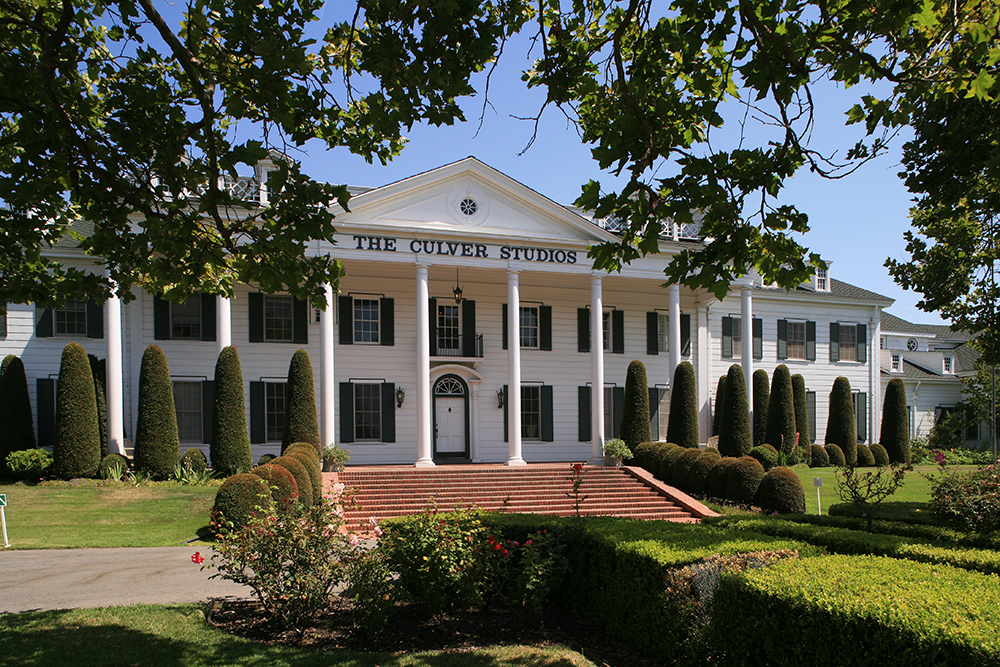
Behind "The Mansion" stood approximately 40 additional buildings, most of which were designed in the Colonial Revival style. A small cluster of bungalows, specifically constructed for various movie stars and reflecting popular architectural styles of the 1920s and 1930s, were built on the west side of the property. By 1920, the studio boasted two glass stages, a hospital, a fire department, a reservoir that also served as a swimming pool, and an extensive back lot, all of which were fully completed. In that same year, the studios hosted several distinguished visitors, including President Woodrow Wilson, and the King and Queen of Belgium, accompanied by their son, Prince Leopold, all received with considerable pomp and ceremony.
Ince typically maintained two or three production companies working continuously on the lot at any given time. According to film historian Marc Wanamaker, Ince collaborated with a team of eight directors, but "he retained creative control of his films, developing the shooting scripts" and personally assembling each of his productions. By this period, Ince had largely shifted his focus away from westerns in favor of social dramas. He produced several significant films, including Anna Christie (1923), based on the play by Eugene O'Neill, and Human Wreckage (1923), an early anti-drug film starring Dorothy Davenport, the widow of the addicted star Wallace Reid.
Although Ince secured distribution for his films through Paramount and MGM, he found that he no longer wielded the same level of power in Hollywood as he once had, and he actively sought to regain his former status. In 1919, he co-founded Associated Producers, Inc., an independent releasing company, alongside several other independent entrepreneurs, notably his former partner at Triangle, Mack Sennett, as well as Marshall Neilan, Allan Dwan, and Maurice Tourneur. This company was established to distribute their films. However, Associated Producers later merged with First National in 1922.
Despite Ince's continued production of significant motion pictures, the burgeoning studio system began to dominate Hollywood, leaving little room for independent producers. Despite his persistent efforts, Ince was unable to reclaim the powerful standing he once held within the industry. In 1921, he and other independent producers attempted to form the Cinematic Finance Corporation, designed to provide loans to producers who had already achieved success, but this initiative only met with limited accomplishment.
In 1925, a year after Ince's death, the studio was sold (along with Pathé America) to Ince's friend Cecil B. DeMille. In addition to DeMille, other prominent figures who maintained offices on the lot included producer Howard Hughes and Selznick International Pictures. Approximately four years later, DeMille sold his interest to Pathé, and the studio became known as the Pathé Culver City Studio. By 1928, following a series of mergers, the studio was rebranded as RKO/Pathé. By 1957, it had undergone several more name changes, including Desilu Culver, Culver City Studios, and Laird International Studios.
In 1991, Sony Pictures Entertainment acquired the property to serve as the base for its television endeavors, renaming it Culver Studios. In 2004, Sony subsequently sold the studio to a group of investors. The street intersecting the studios was renamed Ince Boulevard in his honor. Today, the studio continues to be home to Brooksfilms.
4.3. Studio Publications
Thomas H. Ince's studio also produced The Silver Sheet, a publication promoting his productions.


















5. Key works
Thomas H. Ince's extensive filmography includes numerous works that significantly contributed to the development of early cinema, with several recognized for their lasting importance.
Three of his films have been selected for preservation by the National Film Registry:
- The Italian (1915), for which he wrote the screenplay, depicting immigrant life in Manhattan.
- Hell's Hinges (1916).
- Civilization (1916), which he directed, an epic plea for peace and American neutrality set in a mythical country.
Other important early films include:
- War on the Plains (1912)
- Custer's Last Fight (1912), notable for featuring Native Americans who had participated in the actual battle.
- The Battle of Gettysburg (1913), a five-reel film that helped popularize the concept of the feature-length film.
- The Gangsters and the Girl (1914)
- The Clodhopper (1917)
- Anna Christie (1923), based on the play by Eugene O'Neill.
- Human Wreckage (1923), an early anti-drug film.
- Two-Gun Hicks (1924)
- The Curse of the Flames (1924)
- The Last Invasion of Zeppelin (1924)
Ince's final film, Enticement, a romance set in the French Alps, was released posthumously in 1925.
5.1. Selected Film Posters
A selection of posters and advertisements for films produced or directed by Thomas H. Ince:
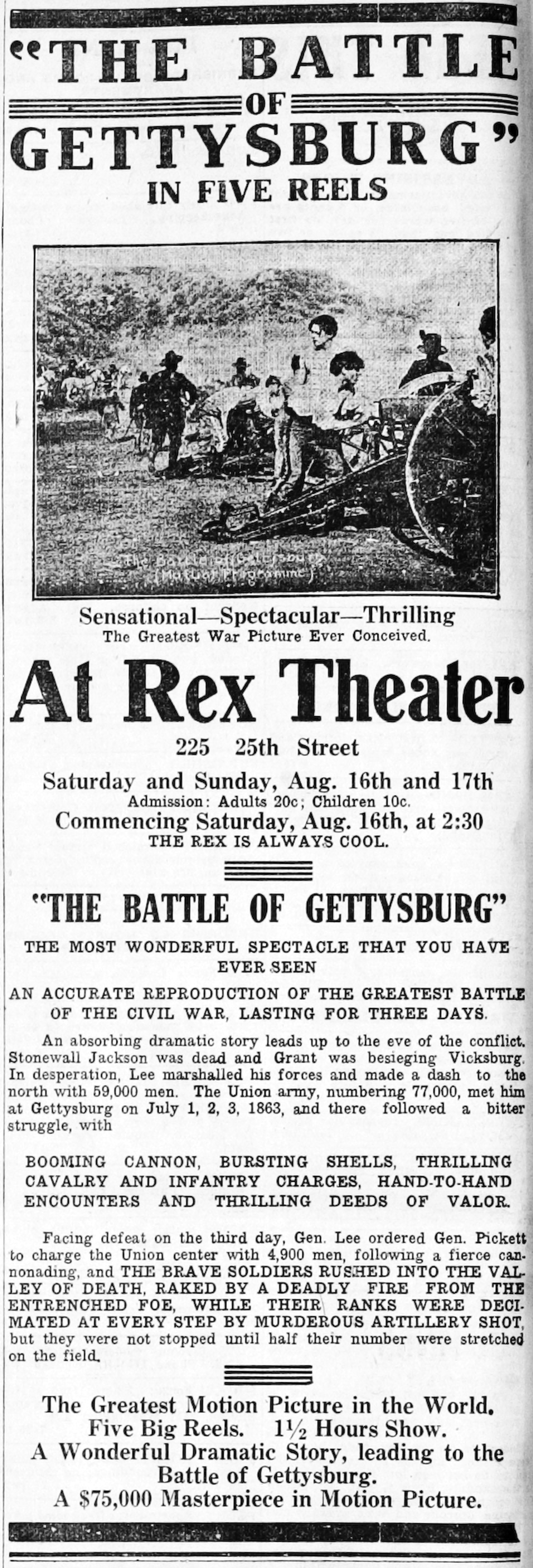
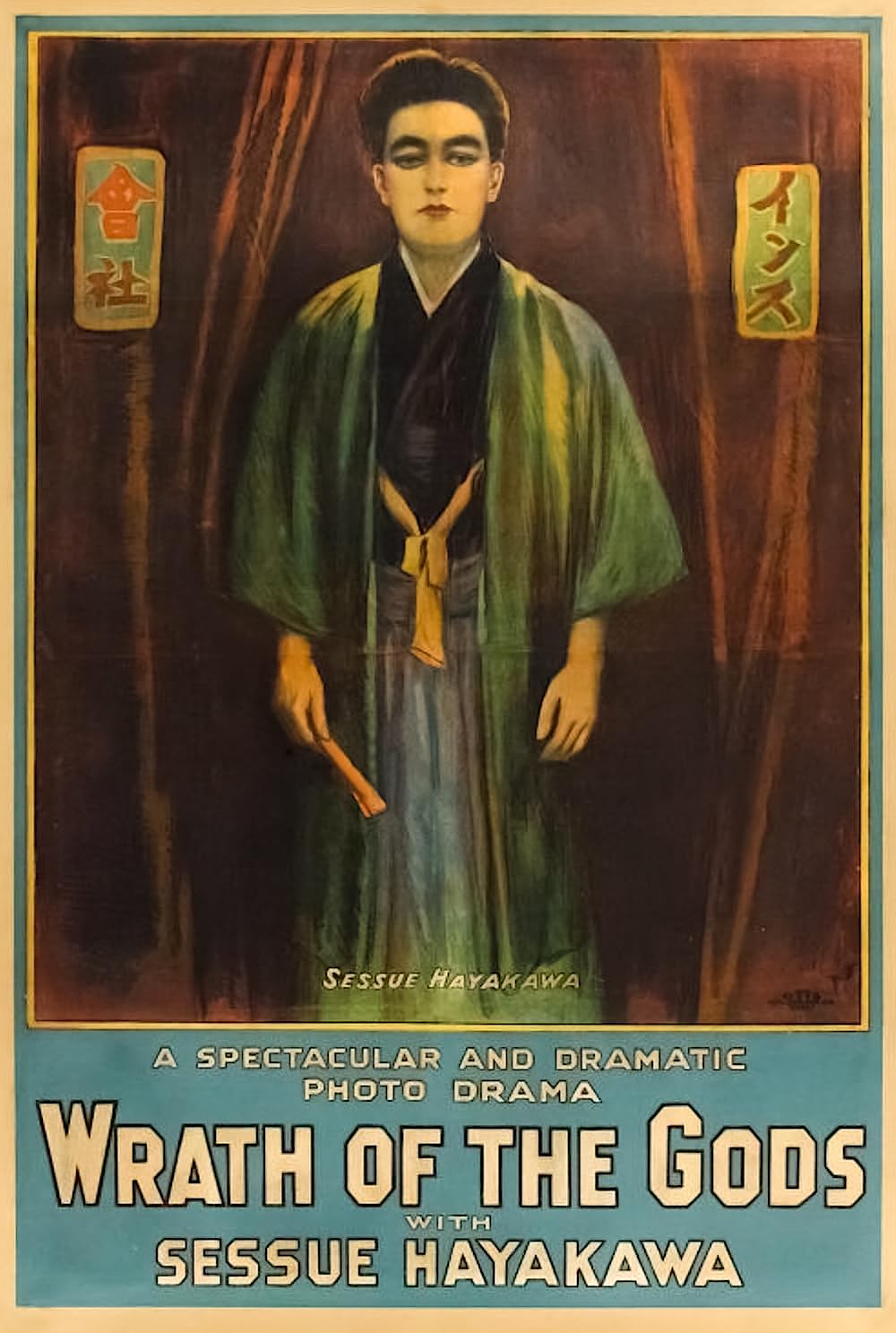
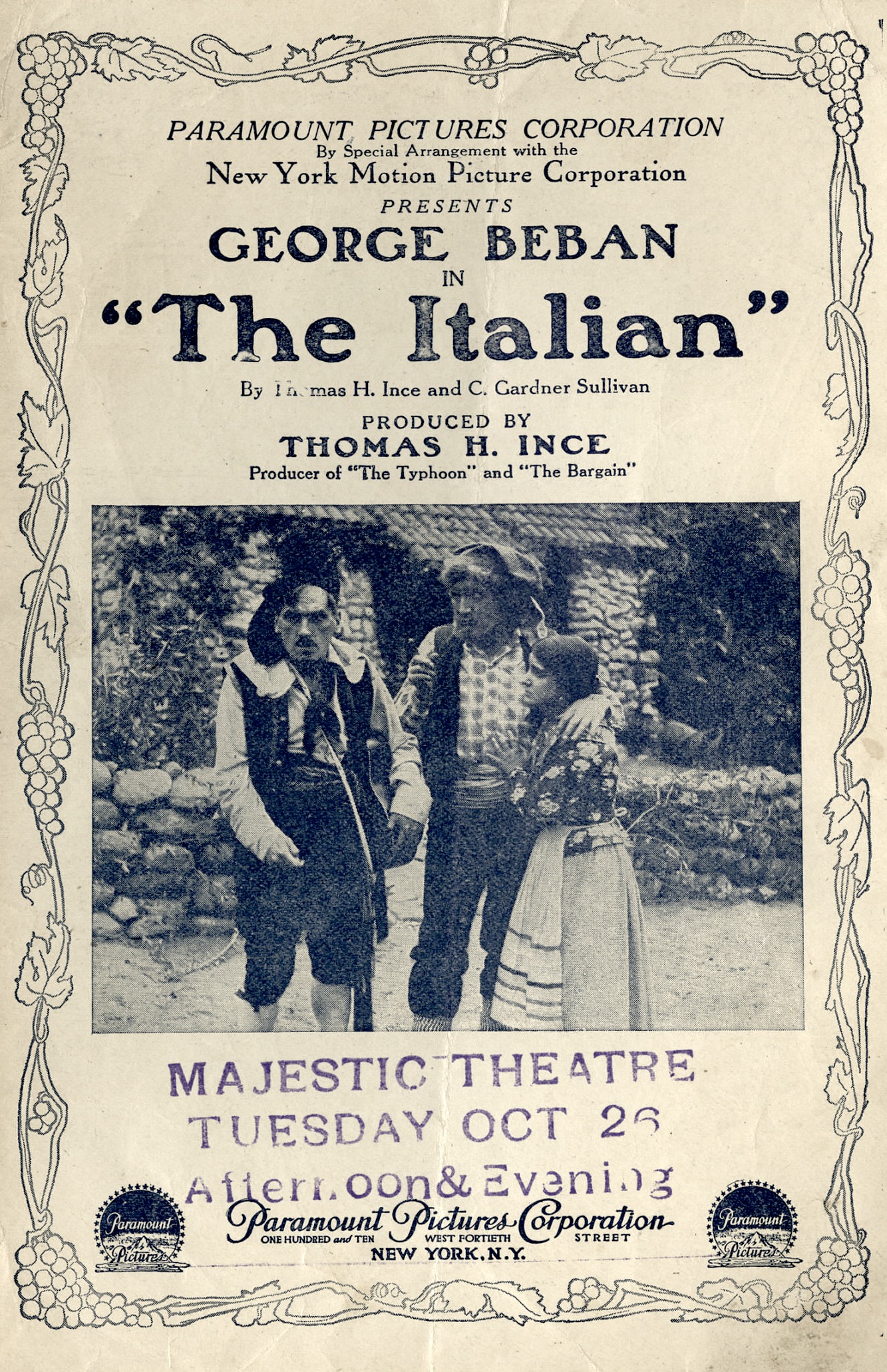
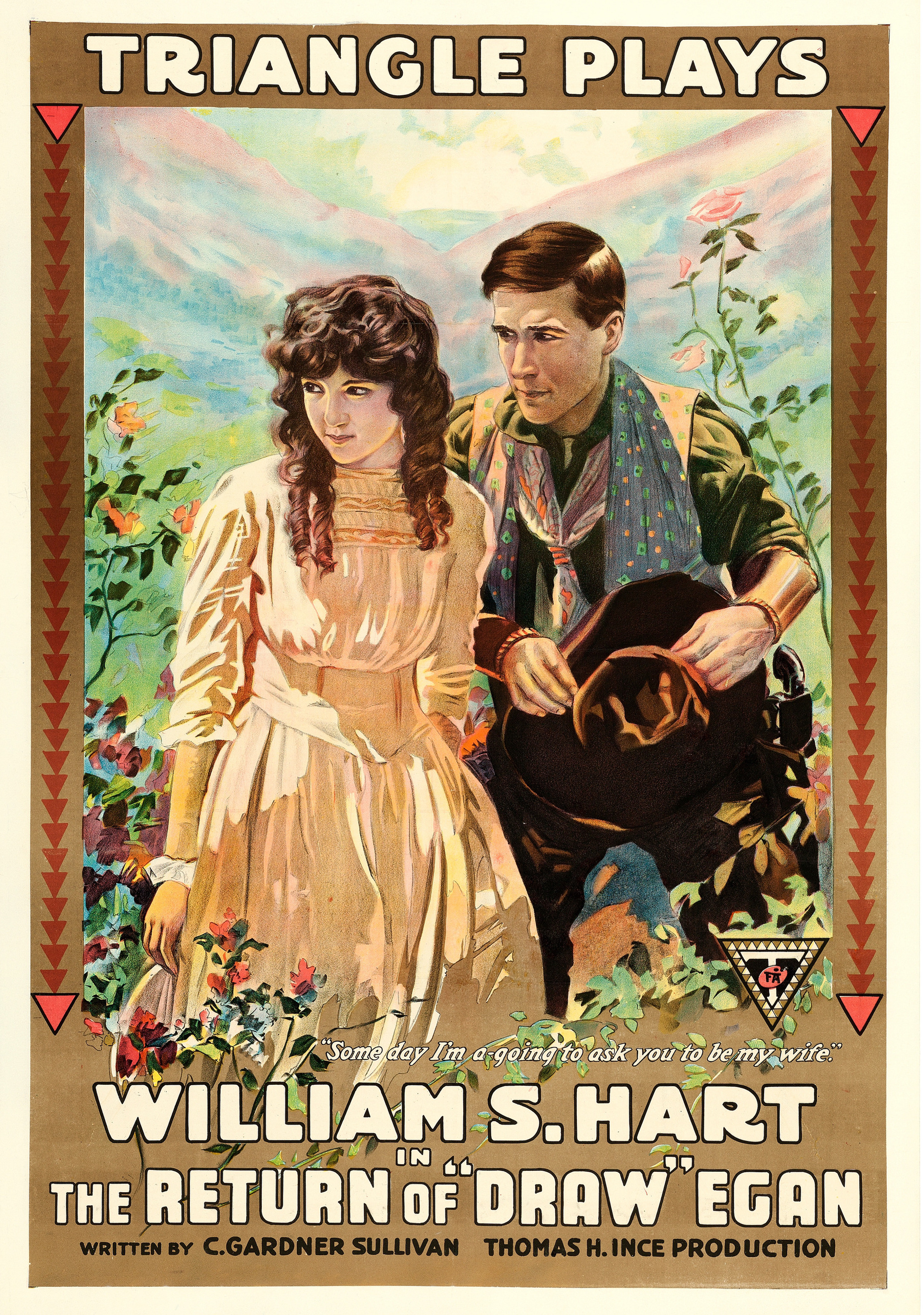
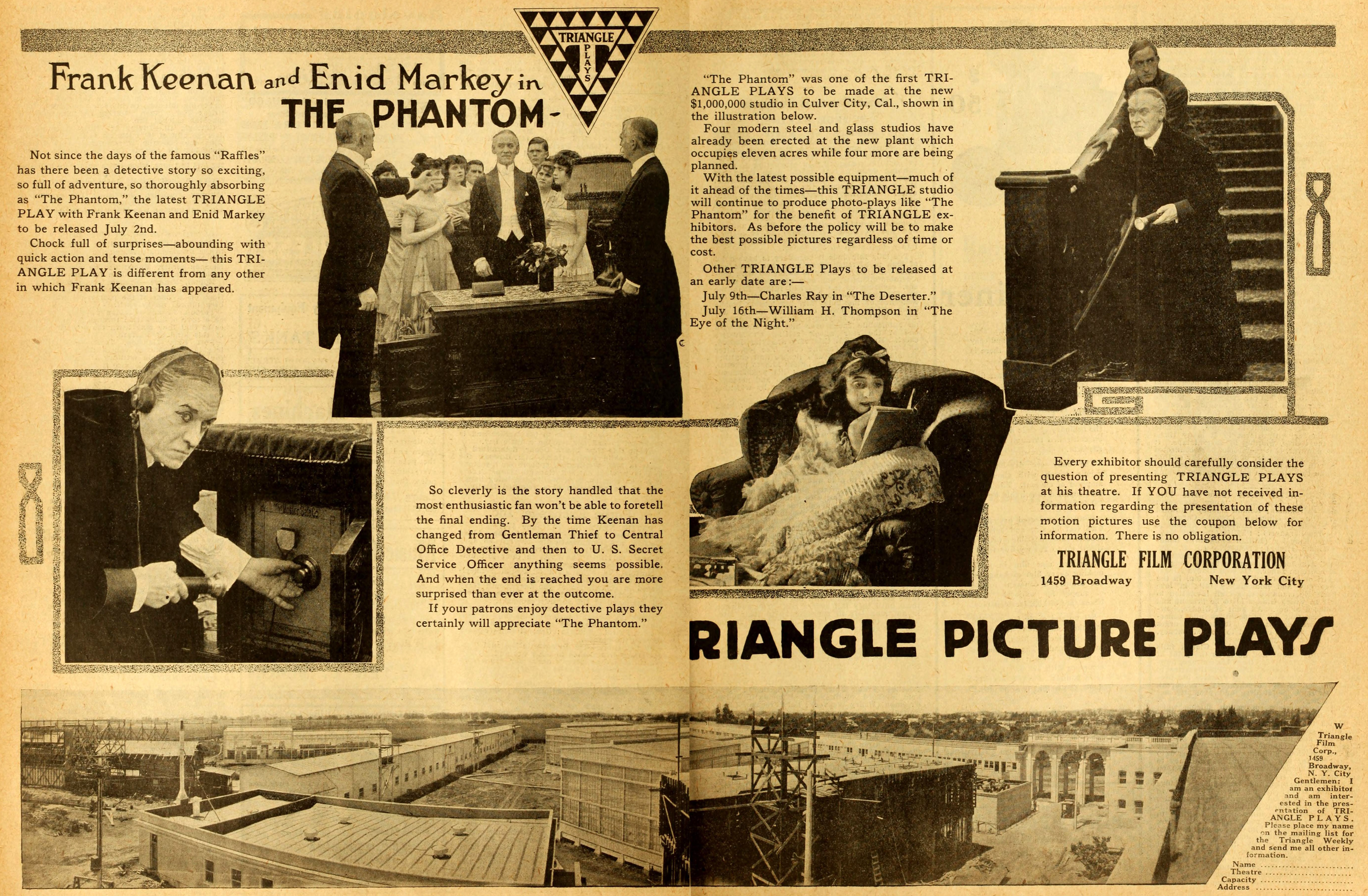

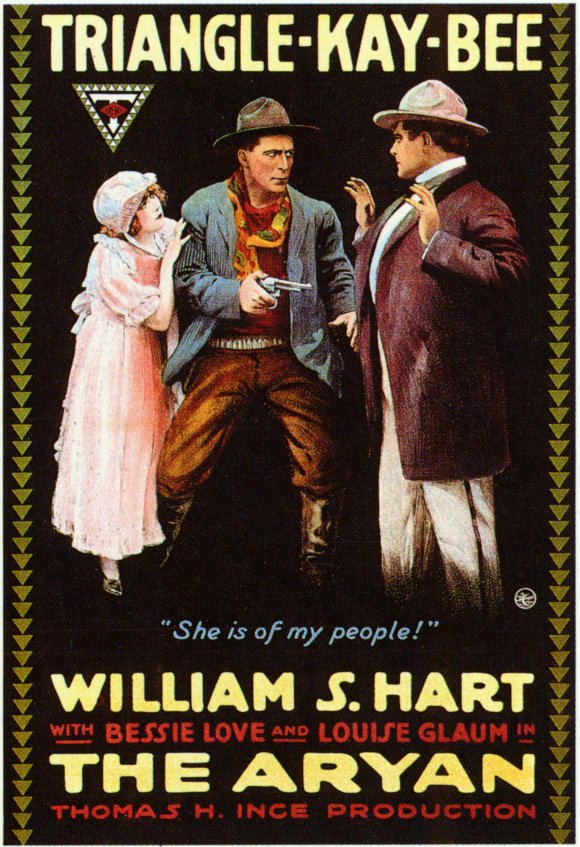
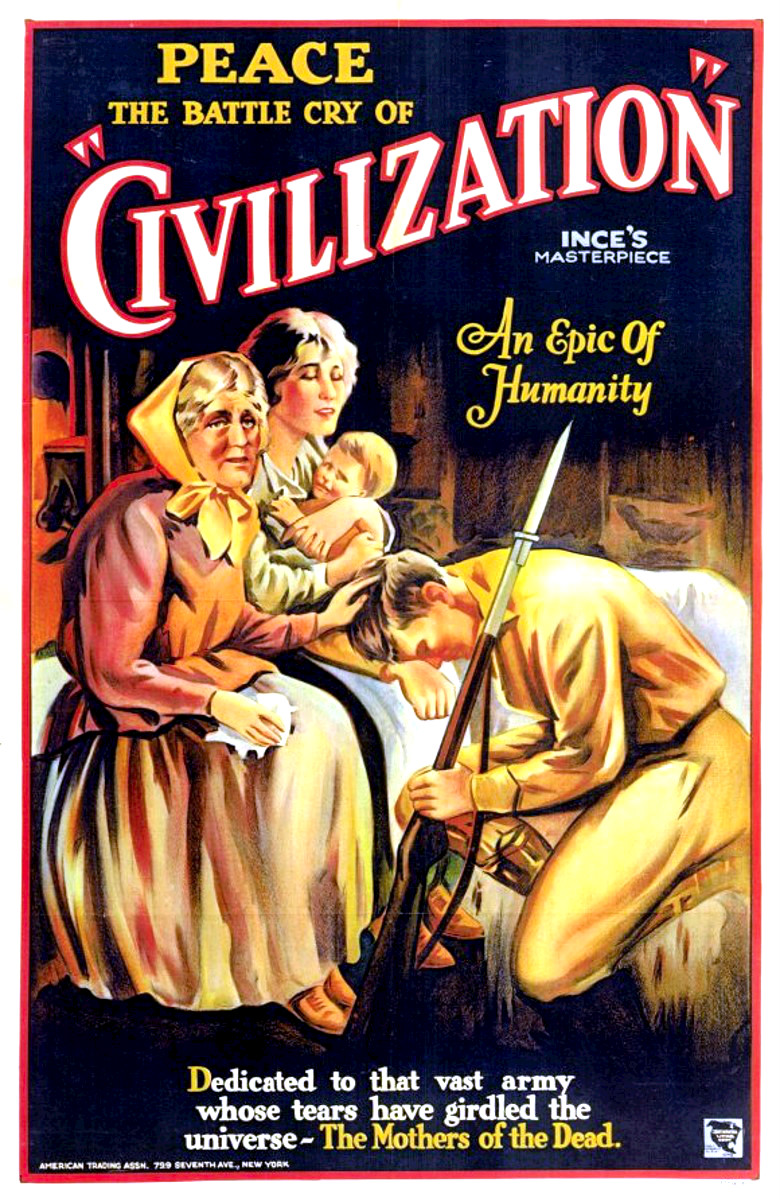
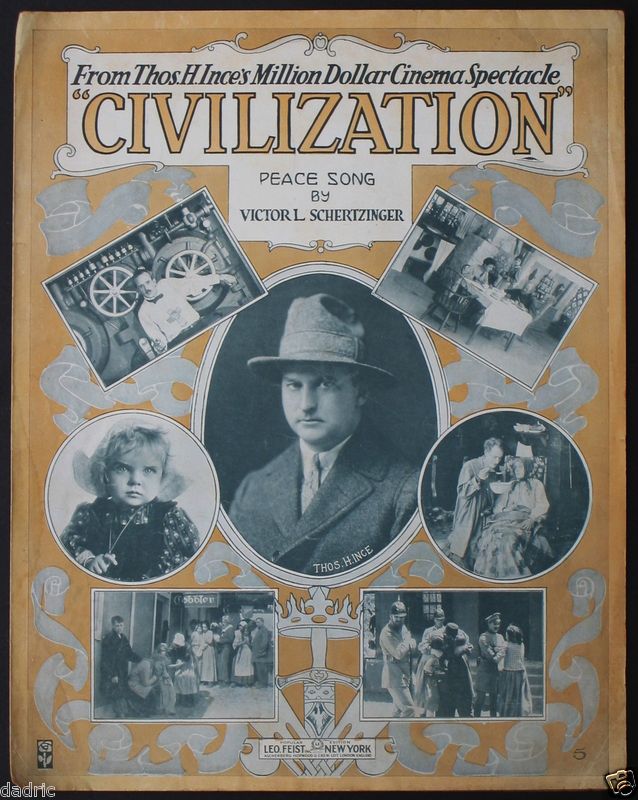
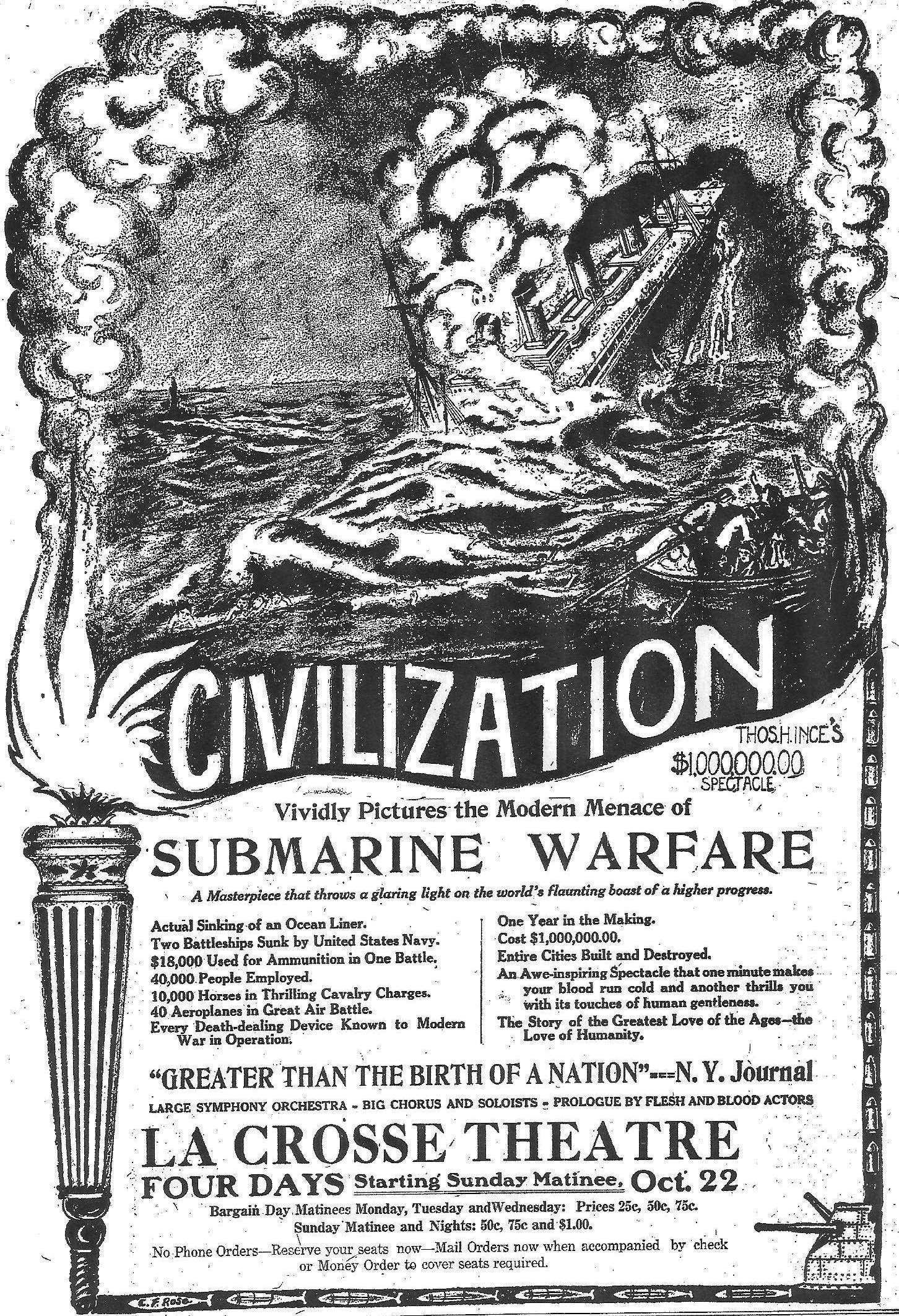
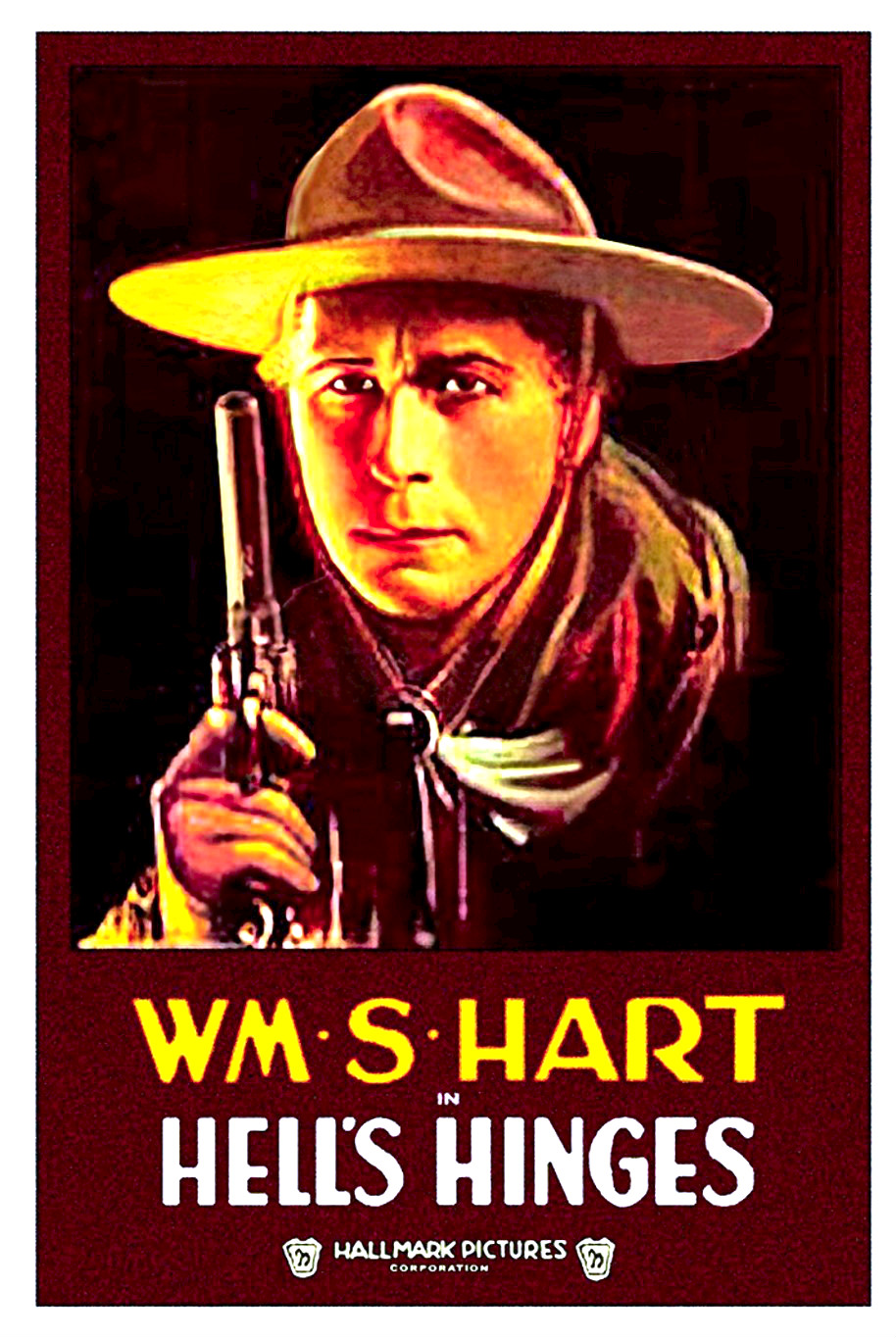
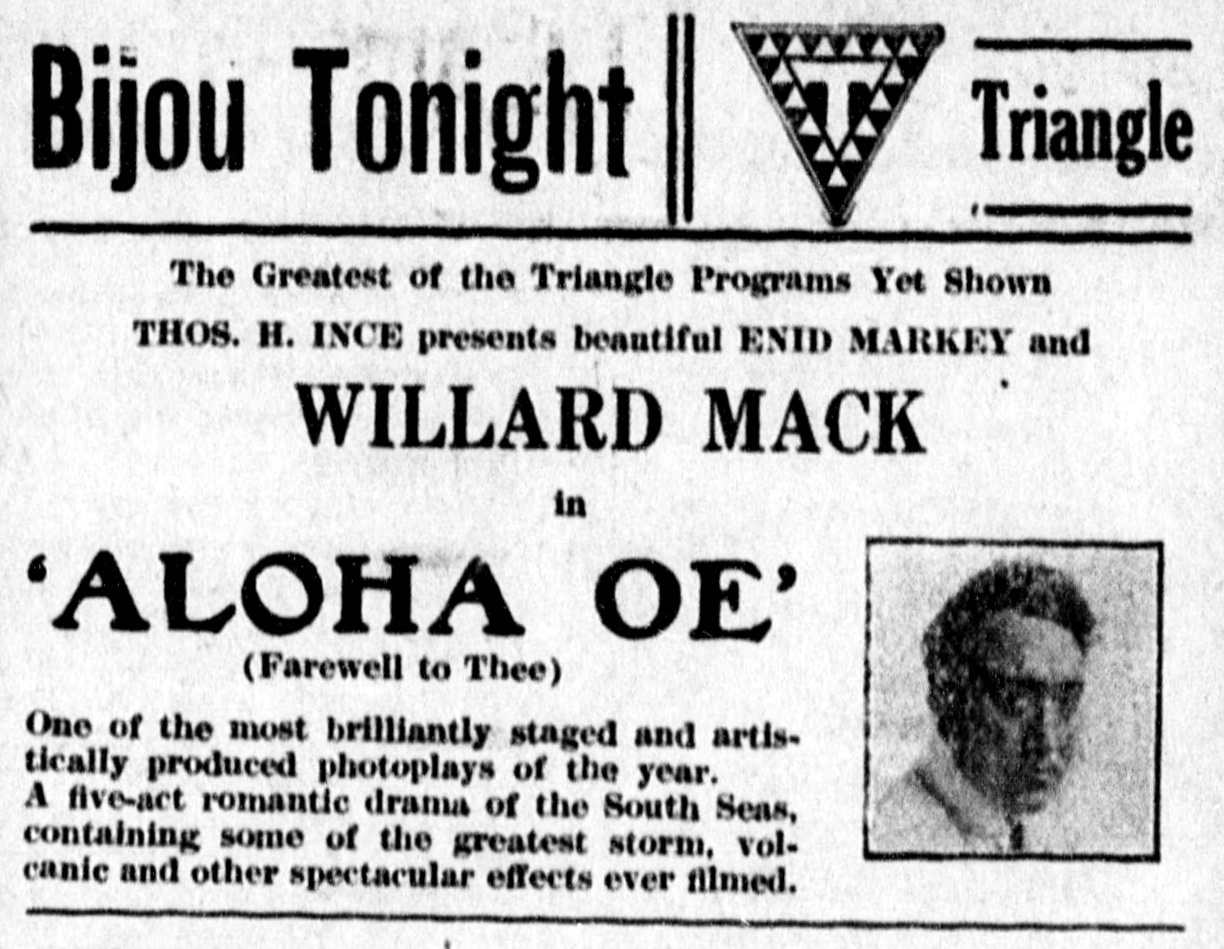
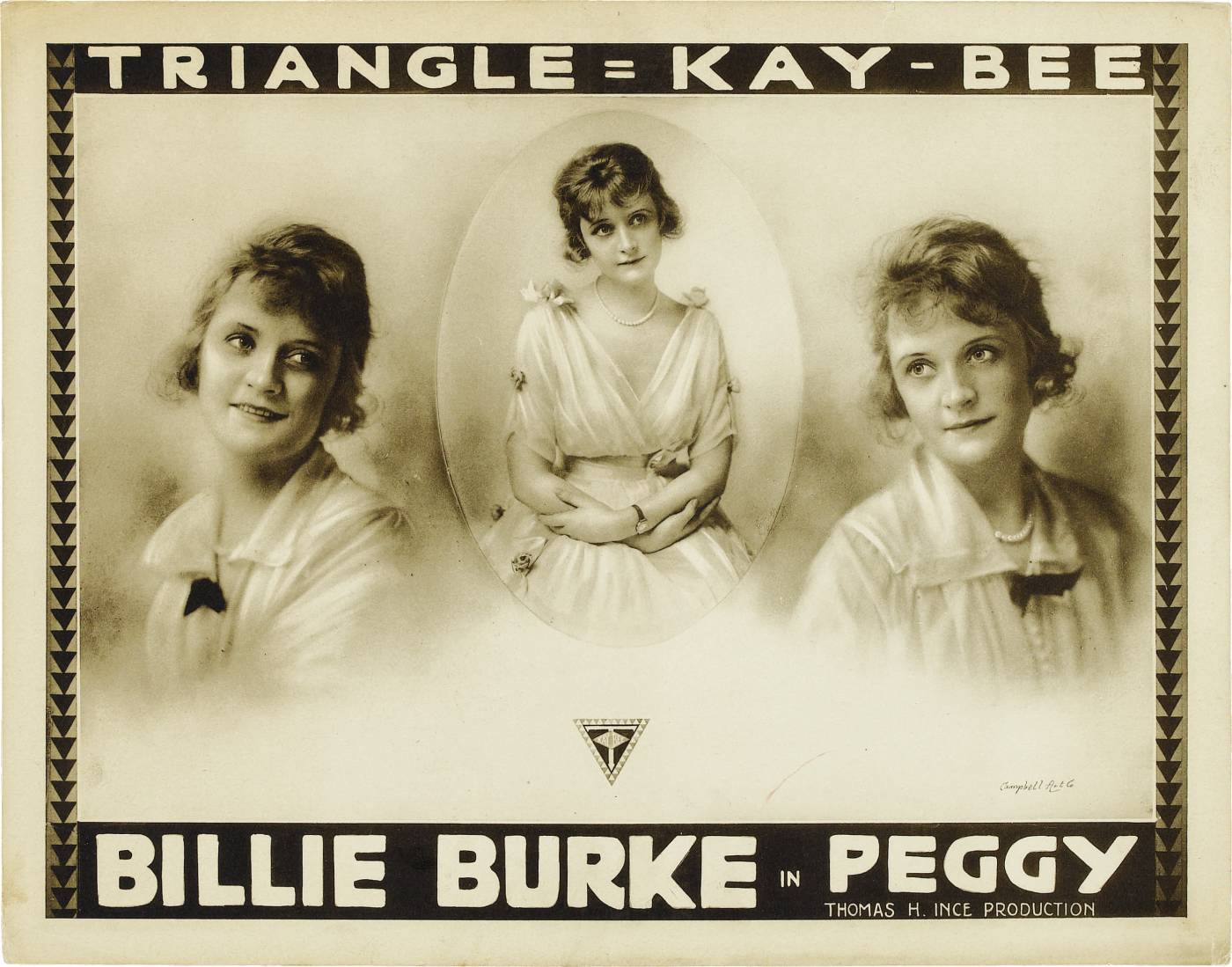
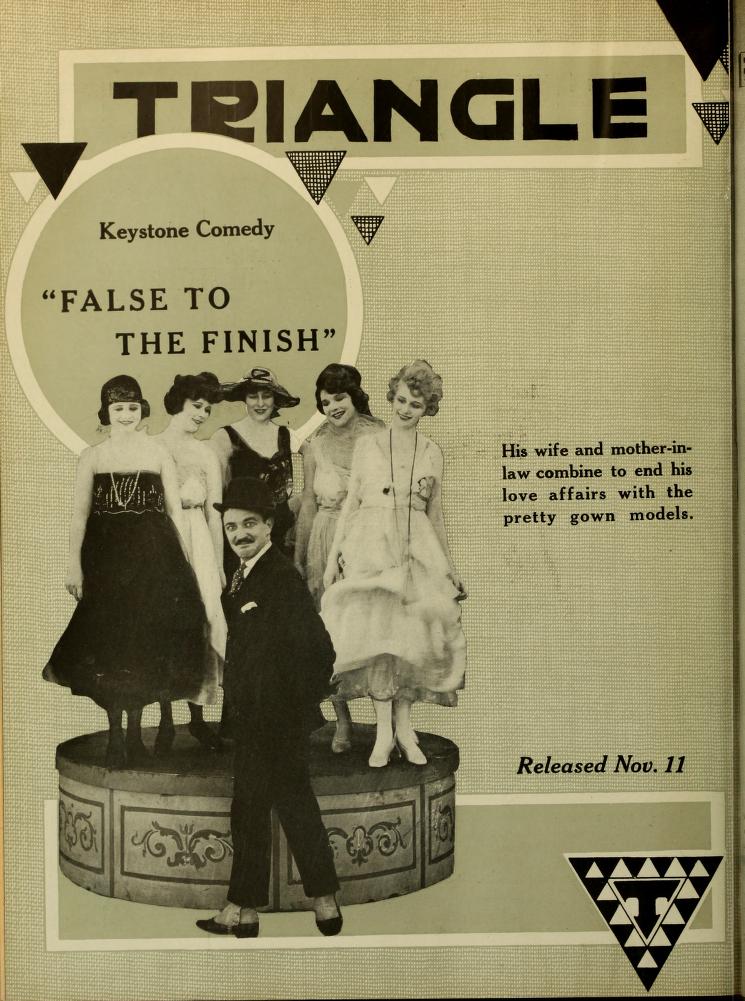
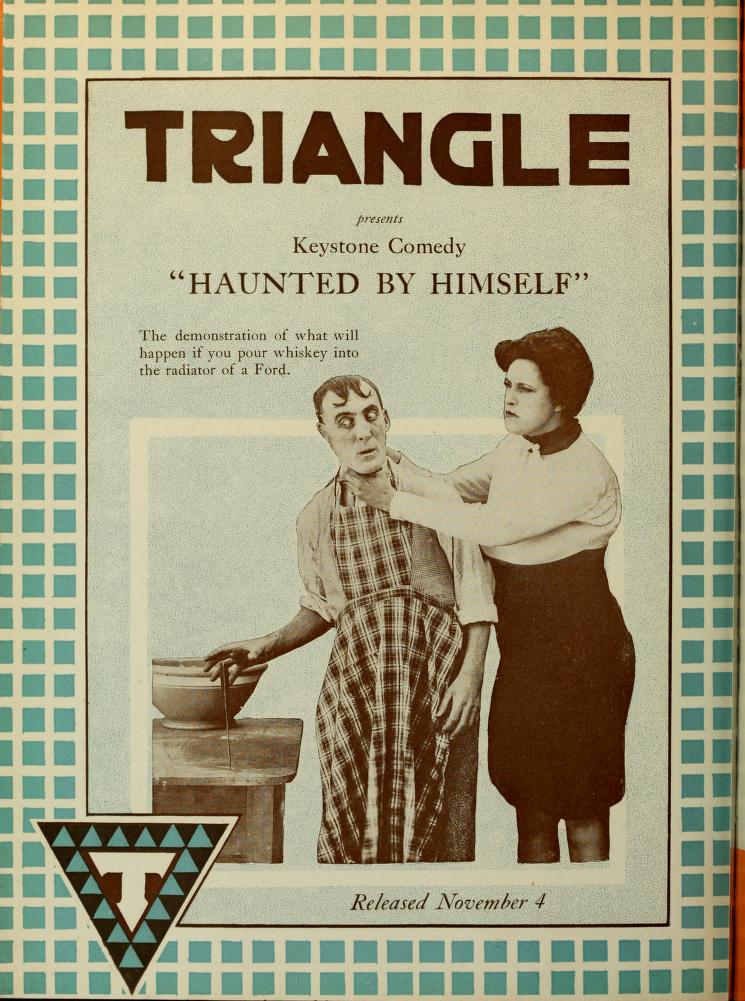
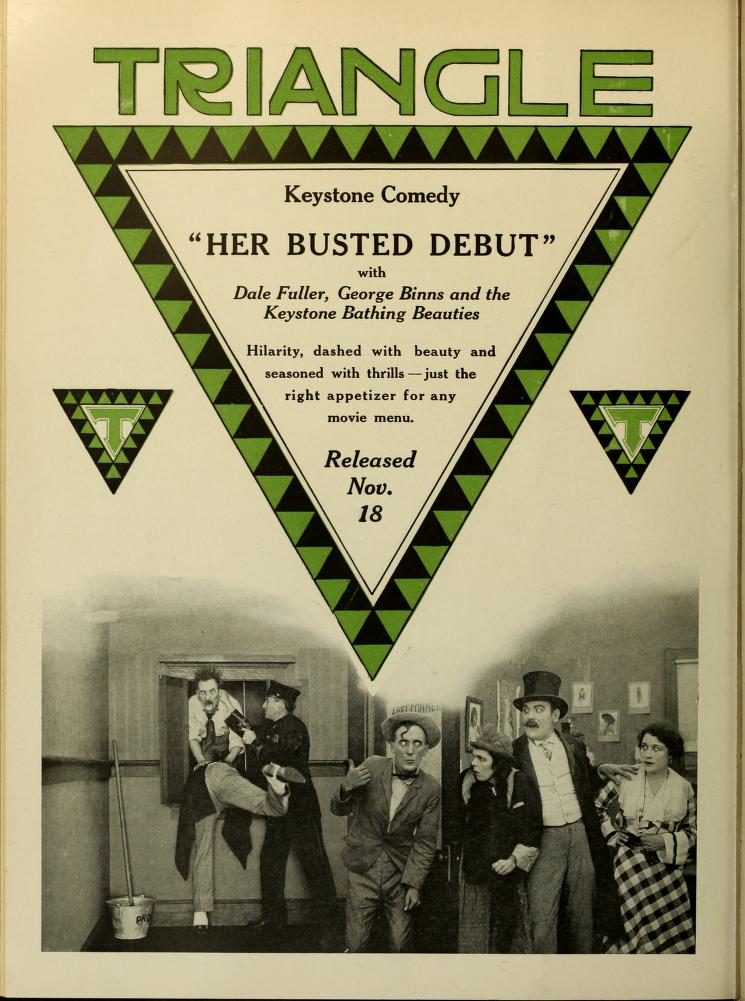
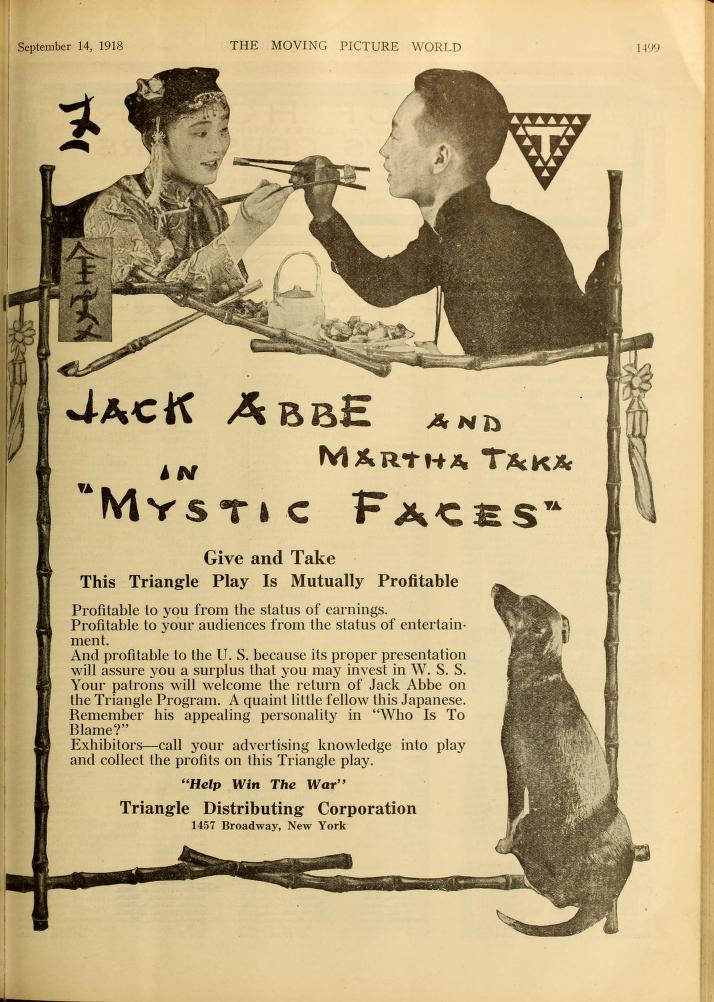
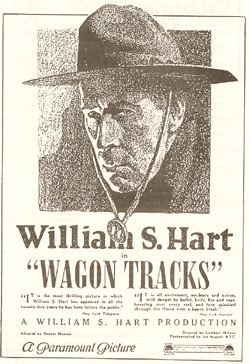
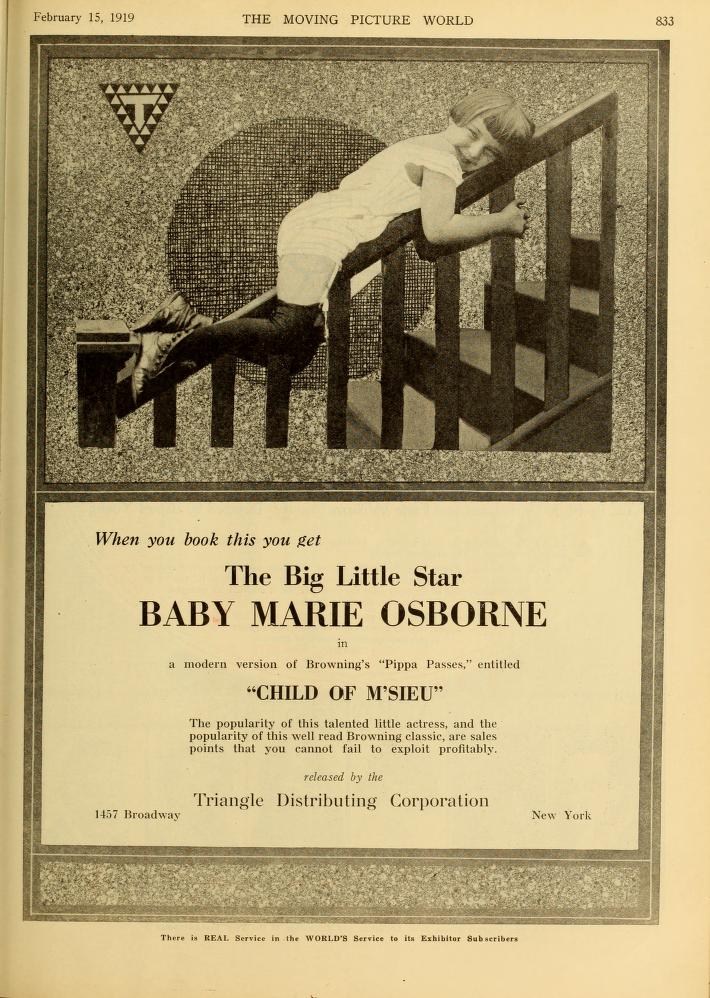
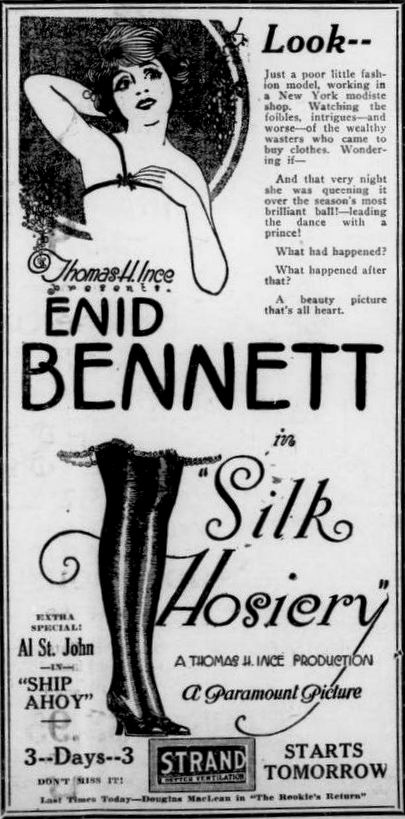
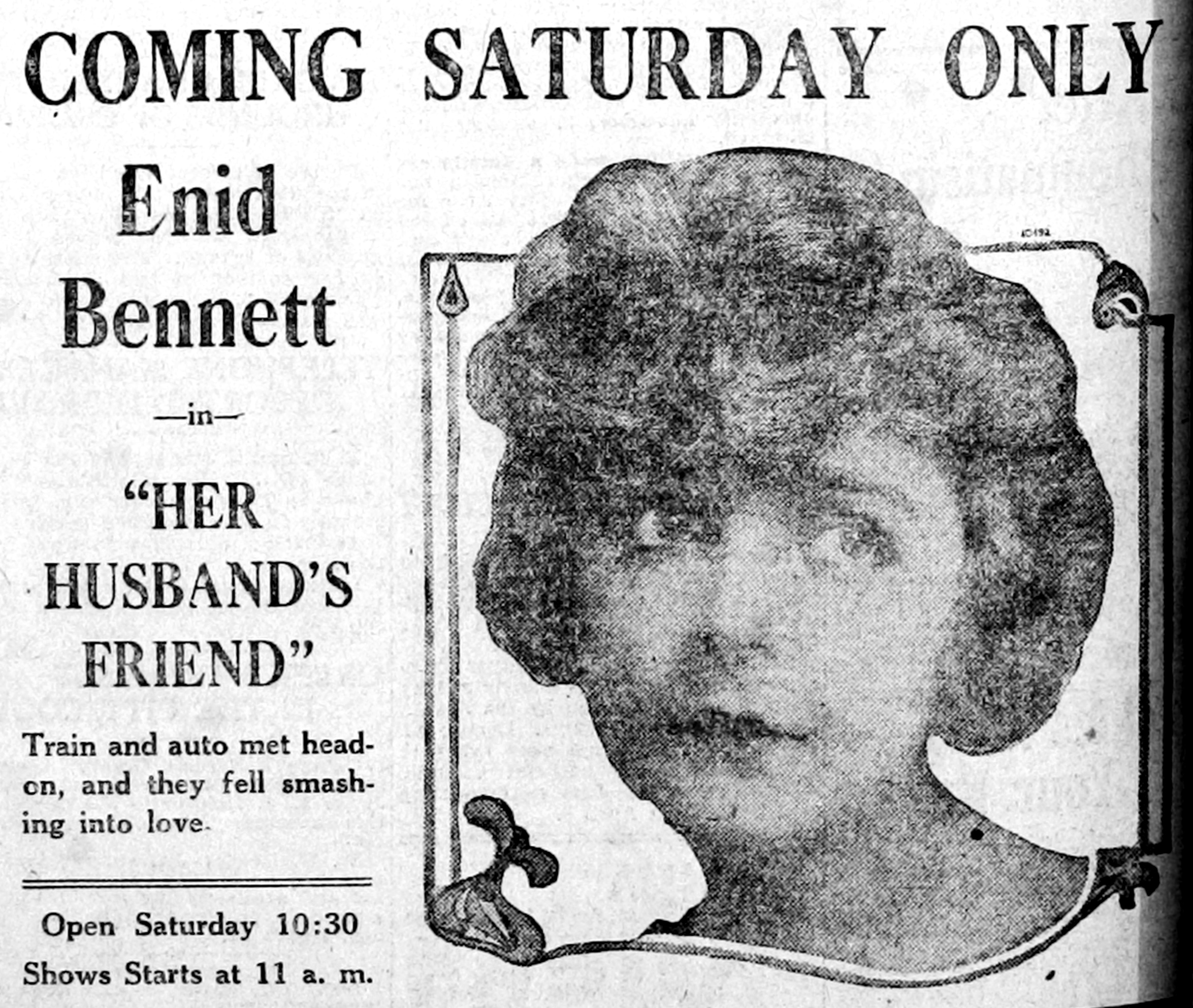
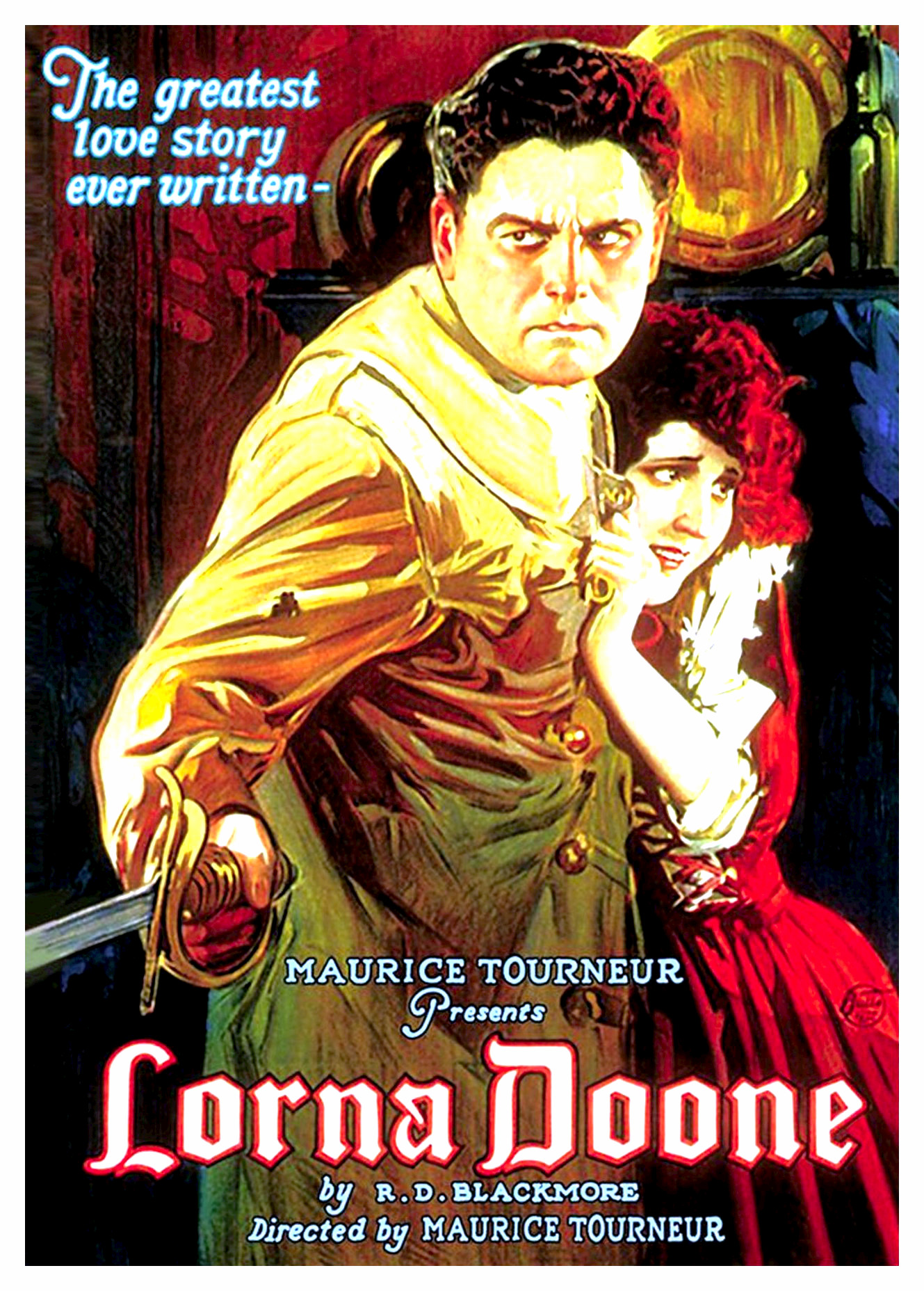
6. Personal life
Thomas H. Ince was married to actress Elinor Kershaw, known as "Nell," on October 19, 1907. They had three children. Both Ince and his wife were practicing Theosophists, a spiritual movement, and had made arrangements for cremation long before his death.
7. Death and controversy
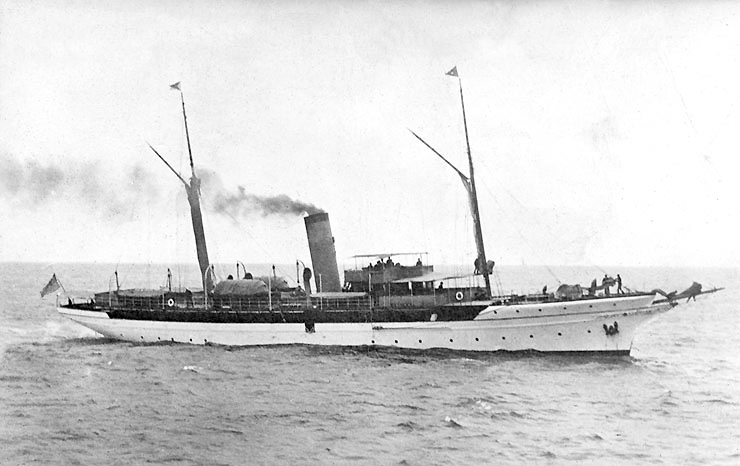
Thomas H. Ince's death at the age of 44 has been the subject of extensive speculation and scandal, giving rise to persistent rumors of murder, mystery, and jealousy. The official cause of his death was recorded as heart failure. While witnesses, including his widow Nell, corroborated that his death resulted from a pre-existing medical condition, sensational rumors persisted for decades, notably fueled by the 2001 film The Cat's Meow.
In late 1924, Ince and media tycoon William Randolph Hearst were engaged in negotiations for a deal under which Hearst's Cosmopolitan Productions would lease Ince's studio. On Saturday, November 15, Hearst visited Ince's "Dias Dorados" estate at 1051 Benedict Canyon Drive and extended an invitation for a weekend cruise on his yacht Oneida. The purpose of the cruise was ostensibly to celebrate Ince's birthday and to finalize the details of the Cosmopolitan deal.
According to Ince's widow, Nell, Ince traveled by train to San Diego, where he joined the other guests the following Sunday morning. That evening, the group celebrated Ince's birthday at dinner. However, Ince subsequently suffered an acute bout of indigestion, attributed to his consumption of salted almonds and champagne, both of which were forbidden due to his pre-existing peptic ulcers. Accompanied by Dr. Goodman, a licensed but non-practicing physician, Ince traveled by train to Del Mar, where he was taken to a hotel and received medical treatment from a second doctor and a nurse. Ince then summoned Nell and his personal physician, Dr. Ida Cowan Glasgow, who were accompanied by Ince's eldest son, William. The group then traveled by train to his Los Angeles home, where Thomas H. Ince died. Nell stated that Ince had been treated for chest pains caused by angina, but years later, his son William, who became a physician, suggested that his father's illness resembled thrombosis.
Dr. Glasgow signed the death certificate, officially listing Angina pectoris as the cause of death. Reports from the time suggest that the front page of the Wednesday morning Los Angeles Times sensationally claimed, "Movie Producer Shot on Hearst Yacht!" However, these headlines reportedly vanished from the evening edition. On November 20, the Times published Ince's obituary, which cited heart disease as the cause of death, along with a mention of his declining health following an automobile accident two years prior. A month later, The New York Times reported that the San Diego district attorney had concluded that Ince's death was due to heart failure and that no further investigation was deemed necessary. Both Ince and his wife were practicing Theosophists who favored cremation and had made arrangements for it well in advance of his death. While rumors circulated that Nell abruptly left the country after her husband's death, she actually departed for Europe approximately seven months later, in July 1925.
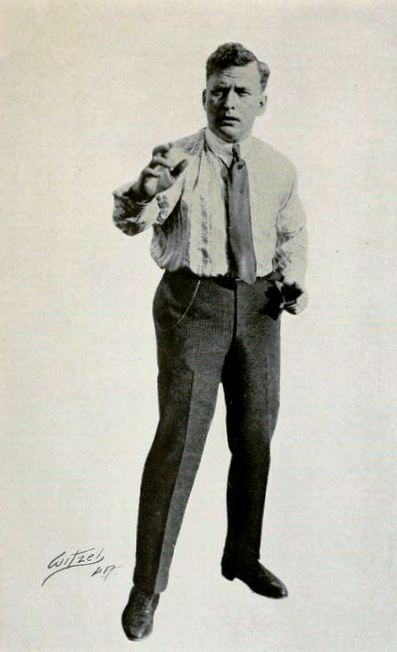
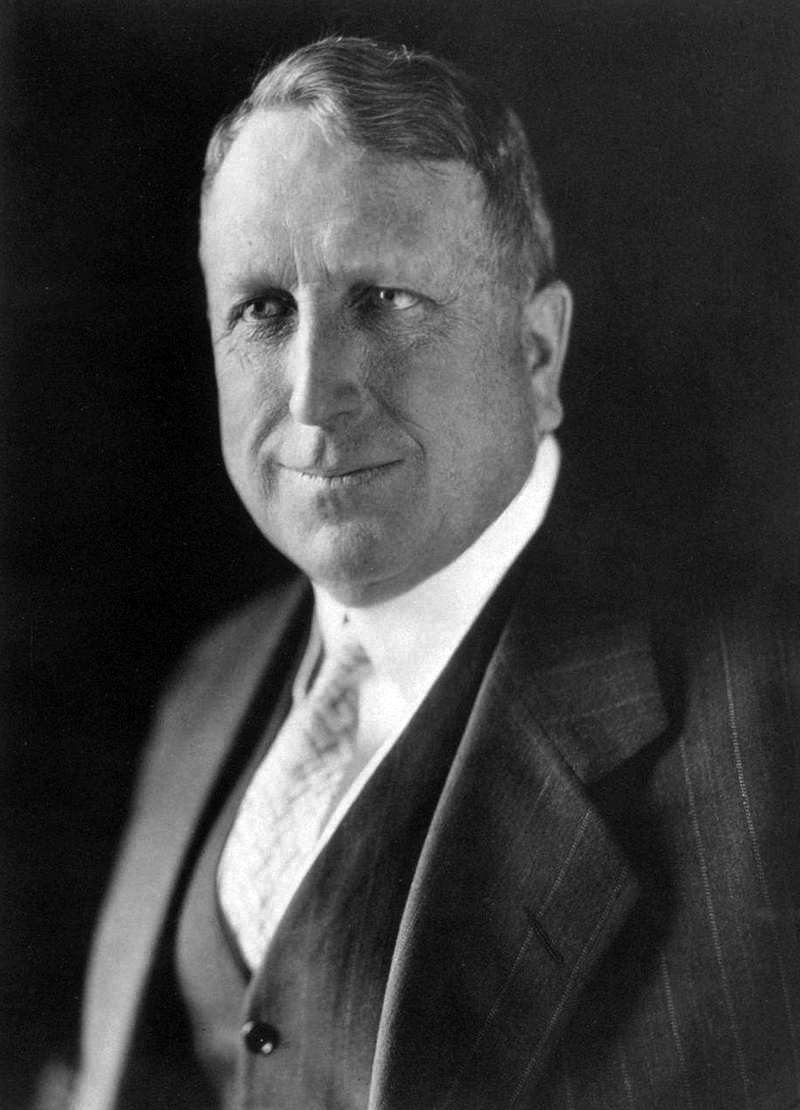
Despite the official statements, several conflicting stories about the incident circulated, frequently revolving around the claim that Hearst had shot Ince in the head, mistaking him for Charlie Chaplin. Chaplin's valet, Toraichi Kono, reportedly claimed to have seen Ince being brought ashore via stretcher in San Diego, his head "bleeding from a bullet wound." This story rapidly spread among Japanese domestic workers throughout Beverly Hills. Charles Lederer, the nephew of Hearst's longtime partner Marion Davies, reportedly recounted a similar version of events to Orson Welles, who in turn shared it with Peter Bogdanovich, the director of The Cat's Meow. Elinor Glyn, who was present aboard the Oneida, told Eleanor Boardman that everyone on the yacht had been sworn to secrecy about the events, a detail that would suggest more than a death by natural causes.
However, contrary to these accounts, during Ince's funeral, the Los Angeles Times reported that his casket would remain open for one hour "to afford friends and studio employees to pass for one last glimpse of the man they loved and respected," and no witnesses ever mentioned a bullet wound. Ince's body was cremated on November 21 at Hollywood Forever Cemetery, and his ashes were returned to his family on December 24, 1924, reportedly scattered at sea.
The name of Hearst's movie columnist, Louella Parsons, also became entangled in the Ince scandal, with some speculating that she had been aboard the Oneida during the alleged shooting and that Hearst subsequently granted her a lifetime contract and expanded her syndication as "hush money." However, other sources indicate that Parsons had already been the motion picture editor of the Hearst-owned New York American in December 1923, and her contract was signed a year before Ince's death, suggesting her position was not a result of the Ince affair. Another rumor circulated that Hearst provided Nell with a trust fund just before she departed for Europe and that Hearst paid off Ince's mortgage on his Château Élysée apartment building in Hollywood. However, Nell was already a very wealthy woman, and the Château Élysée was an apartment building she had owned and built on the grounds where the Ince estate once stood.
Years later, Hearst himself addressed the persistent rumor that he had murdered Ince, stating to a journalist, "Not only am I innocent of this Ince murder, So is everybody else." Nell, too, expressed increasing frustration over the rumors surrounding her husband's death, remarking, "Do you think I would have done nothing if I even suspected that my husband had been victim of foul play on anyone's part?" Despite these denials, the sensational myth surrounding Ince's death largely overshadowed his significant reputation as a pioneering filmmaker and his crucial role in the growth of the film industry. His studio was sold shortly after his passing.
8. Legacy and impact
Thomas H. Ince is widely regarded as the "Father of the Western" for his pivotal role in popularizing and defining the genre through his prolific output of films. His influence, however, extended far beyond a single genre, fundamentally revolutionizing the entire motion picture industry.
Ince was a true pioneer, responsible for creating the first major Hollywood studio facility, "Inceville," which served as a prototype for the integrated studio complexes that would dominate the industry. His most significant contribution was the invention of the "assembly line" system of filmmaking, a disciplined and systematic approach to production that allowed for the efficient creation of multiple films simultaneously. This innovation decentralized the creative process while centralizing control, enabling a higher volume of output to meet the increasing demand from theaters.
Furthermore, Ince was instrumental in developing and solidifying the role of the producer. He was among the first to establish the producer as the central authority, overseeing a film from its inception to its final cut, thereby defining the producer's creative and industrial responsibilities. His foresight in hiring separate screenwriters, directors, and editors, rather than having one person perform all these roles, laid the groundwork for the specialized division of labor that became standard in Hollywood. Film preservationist David Shepard noted that Ince's production conventions persisted for decades, and his influence far outlived his relatively short 14-year career in films.
Ince also had a keen eye for talent, discovering and nurturing many individuals who would become prominent figures in the industry, including his old actor friend, William S. Hart. Despite the overshadowing controversy surrounding his death, Ince's achievements in systematizing film production and establishing the modern studio model are undeniable. His contributions laid essential foundations for the industrialization and expansion of Hollywood cinema.
In recognition of his profound impact on the film industry, Thomas H. Ince was honored with a star on the Hollywood Walk of Fame, located at 6727 Hollywood Boulevard in Los Angeles.
9. In popular culture
Thomas H. Ince's life, and particularly the mysterious circumstances surrounding his death, have inspired several fictional works in popular culture.
- Murder at San Simeon (1996), a novel by Patricia Hearst (William Randolph Hearst's granddaughter) and Cordelia Frances Biddle, is a mystery based on the 1924 death of producer Thomas Ince aboard William Randolph Hearst's yacht. This fictitious version portrays Charlie Chaplin and Marion Davies as lovers and Hearst as a jealous older man unwilling to share his mistress.
- RKO 281 (1999), a film about the making of Citizen Kane, includes a scene where screenwriter Herman Mankiewicz recounts his version of the incident to director Orson Welles.
- The Cat's Meow (2001), directed by Peter Bogdanovich, is another fictionalized portrayal of Ince's death. Bogdanovich stated that he heard the story from Orson Welles, who in turn claimed to have heard it from screenwriter Charles Lederer (Marion Davies's nephew). In Bogdanovich's film, Ince is portrayed by Cary Elwes. The movie was adapted by Steven Peros from his own play, which premiered in Los Angeles in 1997.